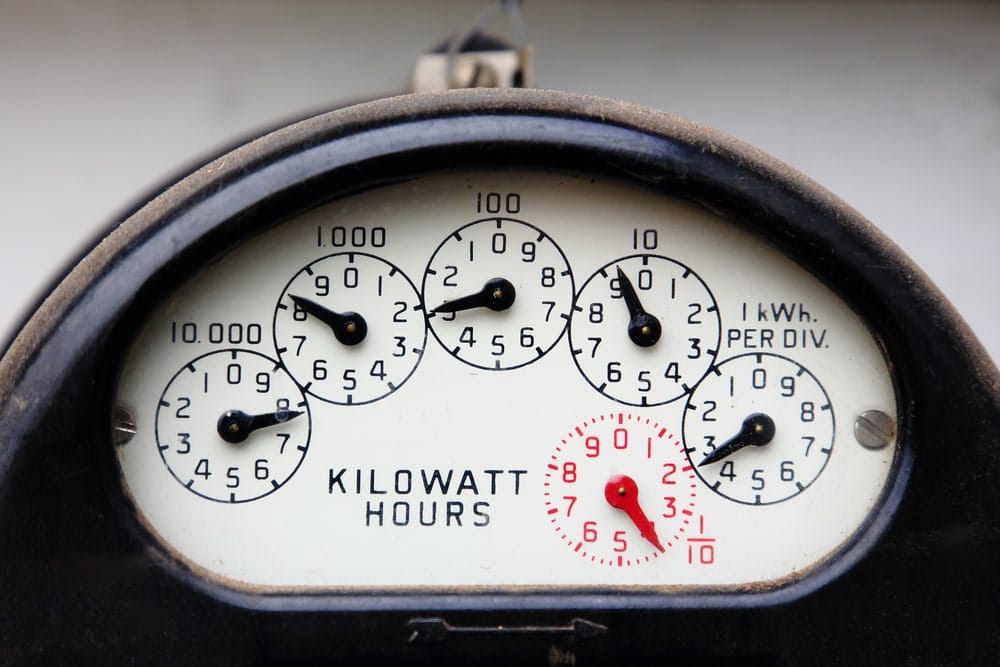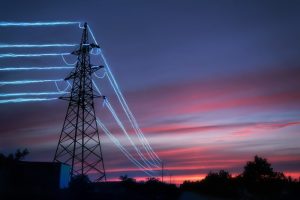Home > Energy Plans > What Is A kWh?
What Is A kWh?
We all know that electricity is measured in kilowatt hours. But have you ever wondered exactly what a kWh is on your electricity bill? Find out here with Savvy.
Author
Savvy Editorial TeamFact checked

In the world of electricity, the kilowatt hour (kWh) is a fundamental unit of measurement that plays a crucial role in understanding energy consumption and billing. Whether you're a homeowner trying to decipher your electricity bill, or an energy-conscious person seeking to reduce your environmental footprint, understanding what a kWh is and how it relates to your daily energy usage is essential. Find out exactly what a kWh is here with Savvy.
What is a kWh, and how is it calculated?
A kWh stands for kilowatt hour, which is a unit of measurement that is used to determine how much energy is consumed by a device. Since the word kilo means 1,000, then it stands to reason that a kilowatt is 1,000 watts. It represents the amount of energy consumed by a device or system operating at a power of one kilowatt for a duration of one hour.
So what is a watt?
A watt is a unit of measurement used to quantify the rate at which electrical power is generated or consumed. It represents the amount of energy transferred or used per unit of time. The watt is named after James Watt, a Scottish inventor and engineer. It is commonly denoted by the symbol ‘W’ and is equivalent to one joule of energy per second. Watts are the international measurement unit used to calculate energy usage, and therefore determine the size of your electricity bill.
In practical terms, a watt measures the amount of work done by an electrical device or system. For example, a 100-watt light bulb consumes 100 watts of electrical power to emit light. The power rating of other appliances, such as fridges and freezers, air conditioners, and televisions, is also listed in watts to indicate their energy consumption.
How is a kWh different from a kilowatt?
A kilowatt (kW) is a unit of power that measures the rate at which electrical energy is generated or consumed. It represents the amount of power being used at a specific moment in time. For example, a 1kW appliance consumes or produces one kilowatt of power.
On the other hand, a kilowatt hour (kWh) is a unit of energy that measures the total amount of electrical energy consumed or generated over a period of time. It represents the accumulation of power usage or generation over time. One kilowatt hour is equal to 1,000 watts of power used or produced for one hour. For example, if you have a 1 kW appliance running for 1 hour, it will consume 1 kWh of energy.
In simpler terms, think of kilowatts as the rate at which power is used or generated, while kilowatt hours represent the total amount of energy consumed or generated over a specific time period.
Why are kWhs important in understanding electricity bills?
Understanding the difference between kilowatts and kilowatt-hours is important for managing electricity consumption, estimating energy costs, and evaluating the efficiency of electrical devices. This is because electricity is typically billed based on the total number of kilowatt hours consumed during the billing period.
By monitoring both the power rating (in kilowatts) and the duration of usage (the period of time that the appliance is being used), you can calculate the total energy consumption (in kilowatt hours) of your household appliances and make informed decisions about the best energy plan for your particular circumstances.
How to do an electricity cost calculation
Electricity tariffs are expressed in the cost (in cents) per kilowatt hour of energy used. By multiplying the kWh usage shown on your electricity meter, by the tariff rate on your electricity plan, and then adding on the supply charge rate per day, you can calculate the cost of your energy consumption for a given period.
What type of appliances or devices consume the most electricity?
Heating and cooling devices use the largest amount of energy in an average Aussie home, according to the latest energy statistics in Australia. These include reverse cycle air-conditioners, evaporative air conditioners, central heating, in-slab floor heating and small portable heaters. They account for around 40% of energy usage in a typical home.
Next comes home appliances, starting with your fridge and freezer, and then your TV. Up to a quarter (25%) of household electricity usage is caused by household appliances.
Hot water heating is the next culprit for using electricity, with around 22% of your energy usage spent on heating up water for your showers, dishwasher, washing machine etc. The remainder of your energy use is split between cooking and lighting, roughly 5% – 8% of household usage each.
Therefore, it stands to reason that if you wish to make savings on your electricity bills, you should first look at the heating and cooling systems you use in your home, as these account for the largest proportion of energy use.
How can I reduce my energy usage and save on electricity bills?
There are many things you can do around your house to monitor and reduce your energy use. Let’s start with these suggestions:
- Heating and cooling: Insulate your home properly to prevent heat loss and gain. Use programmable thermostats, and invest in more energy-efficient heating and cooling systems.
- Energy-efficient appliances: Also invest in energy-efficient appliances with high star ratings to minimise your electricity consumption. Look for appliances that meet the energy rating system standards in Australia.
- Lighting: Upgrade to energy-efficient lighting options, such as LED bulbs. Maximize natural light by opening curtains and blinds during the day. Use task lighting for specific areas instead of lighting up the entire room. Use natural light whenever possible, and turn off lights in unoccupied rooms.
- Standby power: Many people are unaware that appliances still draw power even when they are off, but in standby mode. Unplug electronic devices when they are not in use, and use a power board to group many appliances together so they can all be switched off completely when you go to bed.
- Use hot water more efficiently: Install water-saving fixtures like low-water-use shower heads, and repair any water drips or leaks promptly. Switch to using cold water for your clothes washing and reduce the length of your showers.
- Minimise appliance usage: Only operate your appliances such as washing machines and dishwashers with full loads, and use energy-saving settings whenever possible. Air-dry clothes instead of using a clothes dryer.
- Energy-saving habits: Practice energy-conscious habits, such as turning off lights, using power-saving modes on devices, and adjusting thermostat settings for optimal efficiency.
- Install a solar system: Consider installing solar panels to generate clean energy and potentially reduce reliance on the national electricity grid.
By following these tips and adopting energy-efficient practices, you can considerably lower your energy usage and save on electricity bills. You’ll also be contributing to a greener and more sustainable future.
Helpful energy guides
Compare energy plans
Disclaimer:
Savvy is partnered with Econnex Comparison (CIMET Sales Pty Ltd, ABN 72 620 395 726) to provide readers with a variety of energy plans to compare. We do not compare all retailers in the market, or all plans offered by all retailers. Savvy earns a commission from Econnex each time a customer buys an energy plan via our website. We don’t arrange for products to be purchased directly, as all purchases are conducted via Econnex.
Any advice presented above is general in nature and doesn’t consider your personal or business objectives, needs or finances. It’s always important to consider whether advice is suitable for you before purchasing an energy plan. For further information on the variety of energy plans compared by Econnex, or how their business works, you can visit their website.










